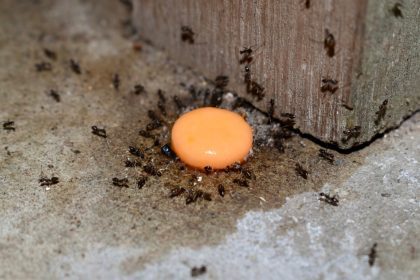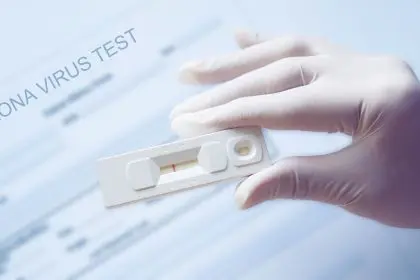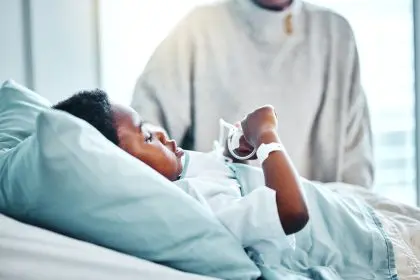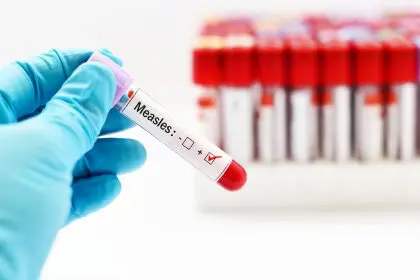The Alabama Department of Public Health has initiated an investigation into a suspected measles case in Lee County, marking what could become the state’s first confirmed measles infection of 2025. The case involves an unvaccinated individual who has not yet reached the age for routine measles vaccination, highlighting ongoing challenges in preventing infectious disease outbreaks among vulnerable populations.
Health officials emphasize that the investigation remains preliminary, with laboratory confirmation still pending to determine whether the suspected case represents an actual measles infection. The potential case occurs against a backdrop of increasing measles activity nationwide, with over 1,000 confirmed cases reported across the United States during the current year.
The investigation reflects broader public health concerns about declining vaccination rates and their potential impact on community immunity against preventable diseases. Alabama health authorities are conducting contact tracing and implementing containment measures while awaiting definitive test results that will determine the scope of necessary public health response activities.
Vaccination timeline creates vulnerability window
The suspected case involves an individual who has not yet reached the recommended age for measles vaccination, which typically begins between 12 and 15 months of age according to standard immunization schedules. This age group represents a particularly vulnerable population that depends on community immunity for protection against infectious diseases.
Infants and very young children who have not yet received their first measles vaccine rely on herd immunity created by high vaccination rates in the surrounding community to prevent exposure to the virus. When vaccination rates decline below critical thresholds, these vulnerable individuals face increased risk of infection and serious complications.
The timing of measles vaccination reflects the natural decline of maternal antibodies that provide temporary protection to newborns during their first months of life. The recommended vaccination schedule aims to provide protection as soon as maternal immunity wanes, but this creates a narrow window during which children remain susceptible to infection.
Public health experts emphasize that protecting unvaccinated infants requires maintaining high vaccination rates among eligible community members to prevent virus circulation and reduce transmission opportunities to vulnerable populations who cannot yet be vaccinated.
National measles resurgence raises alarm
The suspected Alabama case occurs within the context of a significant national increase in measles infections, with 1,168 confirmed cases and three deaths reported by the Centers for Disease Control and Prevention during 2025. This represents a substantial increase compared to recent years when measles cases remained at historically low levels.
The resurgence of measles across multiple states reflects declining vaccination rates that have reduced community immunity below levels necessary to prevent outbreaks. Public health officials attribute this trend to various factors including vaccine hesitancy, disrupted healthcare access, and misinformation about vaccine safety and effectiveness.
International travel and global measles activity contribute to the increased risk of importation cases that can trigger local outbreaks in communities with inadequate vaccination coverage. The highly contagious nature of measles means that even small numbers of infected individuals can rapidly spread the disease among unvaccinated populations.
The three deaths reported nationally underscore the serious health consequences of measles infection, particularly among vulnerable populations including infants, adults, and individuals with compromised immune systems who face higher risks of severe complications and death.
Vaccination coverage gaps threaten community immunity
Alabama’s measles vaccination coverage rate of 87.9% among 35-month-old children falls below the threshold typically required to maintain community immunity against measles outbreaks. Public health experts generally recommend vaccination rates of 95% or higher to prevent measles transmission within communities.
The gap between current vaccination rates and optimal coverage levels creates conditions that allow measles virus to circulate and spread among unvaccinated individuals. Even relatively small decreases in vaccination coverage can significantly increase outbreak risk due to measles’ extreme contagiousness.
Data indicating that 95% of current national measles cases occur among unvaccinated individuals or those with unknown vaccination status demonstrates the continued effectiveness of the measles vaccine in preventing infection. These statistics reinforce the importance of maintaining high vaccination rates to protect both individual and community health.
The concentration of measles cases among unvaccinated populations highlights the role of vaccine hesitancy and access barriers in creating pockets of vulnerability that can sustain disease transmission and facilitate outbreak development.
Historical context demonstrates vaccine effectiveness
The dramatic reduction in measles cases and deaths following the introduction of the measles vaccine in the 1960s provides compelling evidence of vaccination’s public health impact. Before vaccine availability, measles caused approximately 500 deaths annually in the United States, with many more individuals suffering serious complications.
The near-elimination of measles deaths and severe complications through widespread vaccination represents one of modern medicine’s greatest public health achievements. This success story demonstrates how effective vaccines can transform previously devastating diseases into preventable conditions.
However, recent measles outbreaks in various communities serve as reminders that vaccine-preventable diseases remain threats when vaccination rates decline. The return of measles to communities with low vaccination coverage illustrates the ongoing need for vigilant immunization programs and public health surveillance.
The historical comparison between pre-vaccine and post-vaccine measles mortality rates underscores the life-saving potential of maintaining high vaccination coverage and the serious consequences of allowing immunization rates to decline below protective thresholds.
Federal health leadership addresses outbreak response
Health and Human Services Secretary Robert F. Kennedy Jr. has acknowledged the effectiveness of the MMR vaccine in preventing measles transmission during recent outbreak responses, despite his history of raising questions about vaccine safety and necessity. His statements during a Texas measles outbreak emphasized vaccination as the most effective prevention strategy.
The federal response to increasing measles cases includes enhanced surveillance, outbreak investigation support, and coordination with state and local health departments to implement containment measures. These efforts aim to prevent further spread while addressing the underlying factors contributing to outbreak development.
Kennedy’s previous statements questioning vaccine safety and downplaying measles severity have drawn criticism from public health experts who argue that such positions can undermine vaccination efforts and contribute to vaccine hesitancy. The tension between his official responsibilities and personal views creates challenges for consistent public health messaging.
The federal health department’s response to measles outbreaks must balance accurate risk communication with efforts to maintain public confidence in vaccination programs while addressing legitimate concerns about vaccine safety and effectiveness.
Public health response prioritizes containment
Alabama health authorities are implementing standard outbreak investigation protocols including contact tracing, exposure assessment, and targeted vaccination campaigns to prevent further transmission. These measures aim to identify and protect individuals who may have been exposed while preventing community spread.
Contact tracing efforts focus on identifying individuals who may have been exposed to the suspected case during the infectious period, with particular attention to vulnerable populations including infants, pregnant women, and immunocompromised individuals who face higher risks of severe complications.
The investigation includes assessment of vaccination status among contacts and implementation of post-exposure prophylaxis measures for eligible individuals. These interventions can prevent or reduce the severity of measles infection when administered within appropriate timeframes following exposure.
Public health officials emphasize that the investigation’s scope and intensity depend on laboratory confirmation of the suspected case, with more extensive containment measures implemented if measles infection is confirmed through diagnostic testing.
Community education emphasizes prevention
Health authorities are using the investigation as an opportunity to educate the public about measles prevention, vaccine safety, and the importance of maintaining high vaccination rates to protect community health. Educational efforts target both healthcare providers and the general public to ensure accurate information about measles and vaccination.
Communication strategies emphasize the safety and effectiveness of the MMR vaccine while addressing common concerns and misconceptions about vaccination. These efforts aim to increase vaccine confidence and encourage parents to ensure their children receive recommended immunizations on schedule.
Public health messaging also focuses on recognizing measles symptoms and seeking appropriate medical care while avoiding unnecessary panic or stigmatization of affected individuals. Balanced risk communication helps communities respond appropriately to potential health threats while maintaining perspective about actual risk levels.
The educational component of outbreak response serves both immediate containment goals and longer-term prevention objectives by building community understanding and support for vaccination programs that protect public health.


















